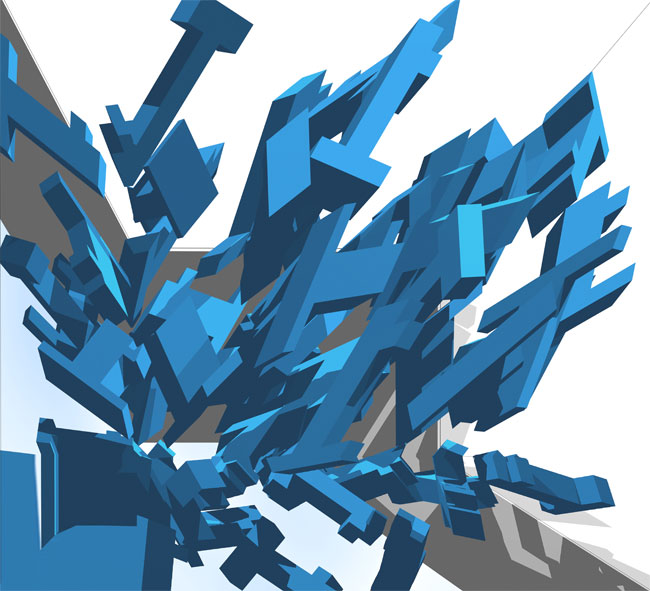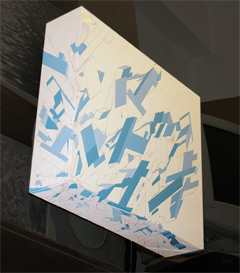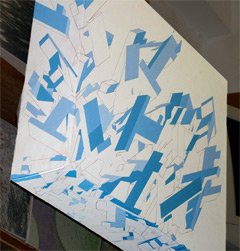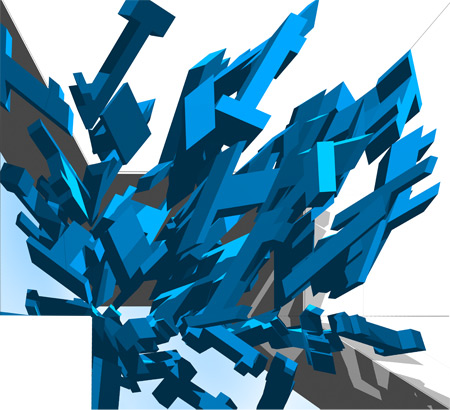|
|
| All
is One - Left Fragmentation |
||||
|
||||
 |
||||
| The point of view is at an inaccessable height. The viewer has to move and maybe strain a bit to reach the point needed to make the side perspectives become at one plane with the front. This involves the viewer in the system. The system of perspective which can be a metaphor for the illusion of perception. Which only has one viewpoint, the same as one person. Every persons viewpoint is a different part of the whole. Wholeness could be said to be everything being one or at oneness. With each bit of the whole being the whole which would not be whole without any part missing! All is one.
|
||||
 |
||||
The use of units within
one artwork shows the systematic nature of my philosophy. The distortion
of one causes a cascade of change around it. Like a web of signification
in structuralism where each constantly refers to each other or one particle
of a micro-state of an overlying macro-state referring to each other and
the overlying macro-state itself their similarity and difference cause
a system to be seen and understood by our perception. The space of our
perception also being one of convention like our use of perspective or
of an innate gestalt such as our reaction to certain patterns can be used
within this system of units to build up a whole from the units. Each unit
either being part of the whole in which the change of any of the units
alters the perception of the others the so called implicate order of the
micro-state altering the overall explicate order of the macro-state. Each
unit could act upon our perspectival conventions to pull the viewer to
one position at which point there significance would change from one of
moving to one of meaning. The separate micro-states would meld to show
the macro-state or explicate order.
|
||||
 |
||||
The idea that the
world is fragmented or made of units is deeply ingrained upon human society.
Different religions, political, economic and racial groups show it's
|
||||
 |
||||
